
Sometimes I just want to be selfish and keep a place to myself, I thought while I was gently swaying on a hammock, under the trees, with refreshing breeze blowing, view of blinding white sands, deep blue horizon and birds enthusiastically in concert above me. But then again, people will always find a way to discover a place like this Nagsasa Cove in San Antonio Zambales. And once word gets out, people would flock here. Just the thought of this quiet cove turning into another crowded tent city beach makes me cringe. I know it’ll be inevitable but for now I’ll make sure I enjoy and every minute I’m here.

Somehow, I felt partially to blame about Anawangin and Capones Island sheer popularity nowadays when I wrote about it back in 2007. I think it was one of the first few to write-ups about the place and admittedly until now, it’s one of my top posts. I never went back there since then and it pains me to hear that it has become one hell of a tent city especially on weekends. I was glad to share this place but I was dismayed on how people treated the cove. News of accidents were alarming, increasing left over trash and there are now areas with barb wires.

Then I’ve heard of Nagsasa Cove. With Anawangin getting too crowded, people would look further for a quieter place. The first time I’ve read about Nagsasa Cove is from a fellow traveler Allan of Lantaw who was one of the first few to “hesitantly” write about and capture its tranquil landscape back in 2009. Mountaineers and Nature trippers have been enjoying these coves for years after the Pinatubo eruption which contributed to it’s white sand beaches but kept it as a whispered secret to a few. I remember boatmen doesn’t even want people to write about it then. I knew when I saw those Nagsasa Photos, that I’m bound to visit this place sooner or later.
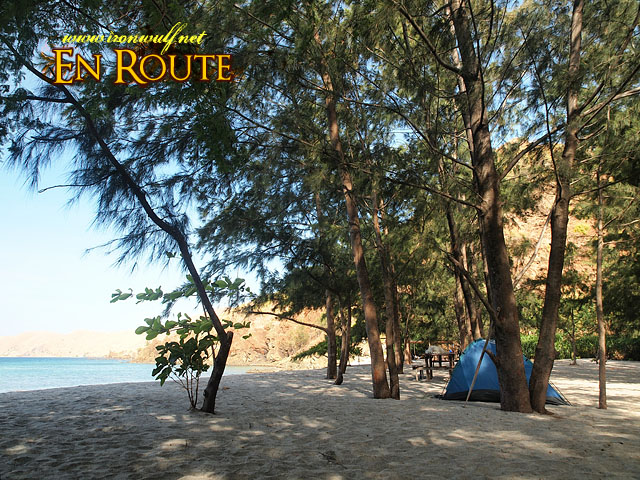
It took me almost four years to find myself back in Pundakit Zambales. Immediately I was astounded on how bustling and developed the town has become on this once sleepy fishing town. San Antonio capitol looks good and new, Pundakit has a nice plaza and a number of new resorts have popped up by this beach. This fishing village has totally been converted to one tourist hot spot. Large billboards boasting Anawangin and Capones Island are positioned to greet visitors and tour operators with boat rentals have also cropped up.
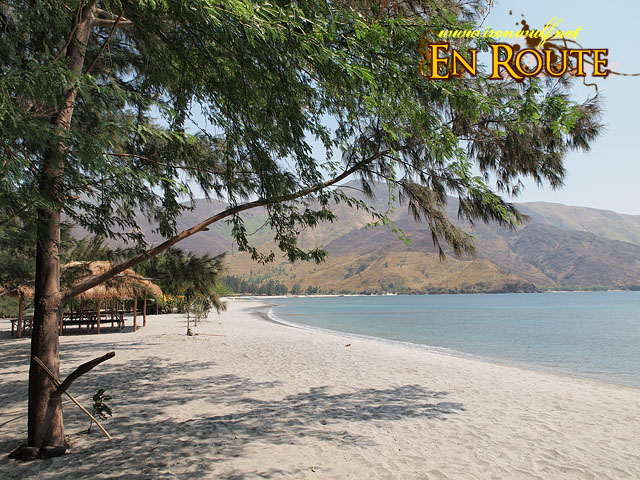
Allan, Oggie and I took the seas in pitch black darkness to be able to reach Nagsasa Cove at first light. Aside from our powerful beam lights, playful luminescent plankton clung to our outrigger boat as we sail through the waves and chilly morning wind. There was a gazillion stars above our heads with Venus strongly outshining the rest of them all. Her luminousness draped our ocean path as if guiding our way to the cove. Sea water splashed unto us as we enter the cove bay and the winds turned to a freezing chill as we approach the shore. Manong Ador, the cove caretaker was there to greet us. We finally reached Nagsasa Cove.
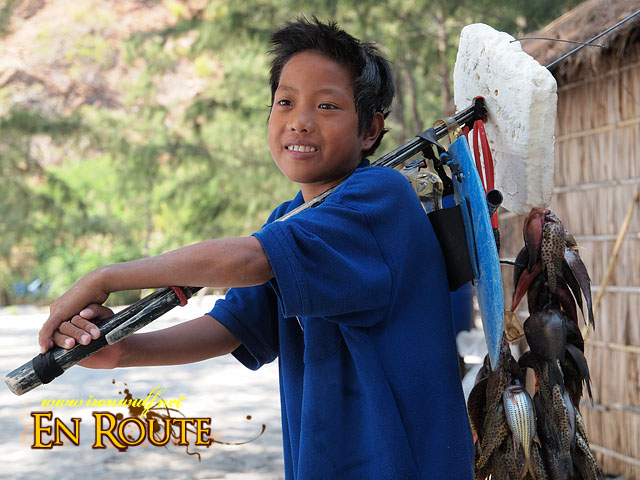
It is at least twice as big as Anawangin and a river divides the cove in half. There are now two sides of Nagsasa Cove in just a short span of time. Mang Ador’s part of the cove is quiet, clean, and has a close to nature feel. While the other side is becoming an unpleasant tent city. While exploring the river side on the opposite cove that morning, the natural hymn of nature was shattered by the blaring music from a generator powered karaoke machine. It seems that some Aetas sold their land rights to a foreigner who are now threatening to build concrete structures on their side of the cove. It’s a disheartening development and I went back to Mang Ador’s Cove where the noise doesn’t stretch as far.
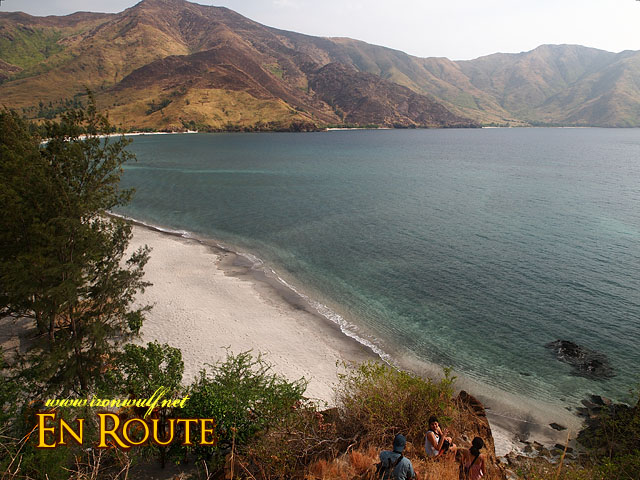
Time passed quickly that morning and I was on the hammock doing nothing but sleep after a short exploration of the area. We were mostly catching up on lost Zzz and didn’t realize it was almost noon. Our two other companions, Raize and Em arrived and caught up with us for lunch.
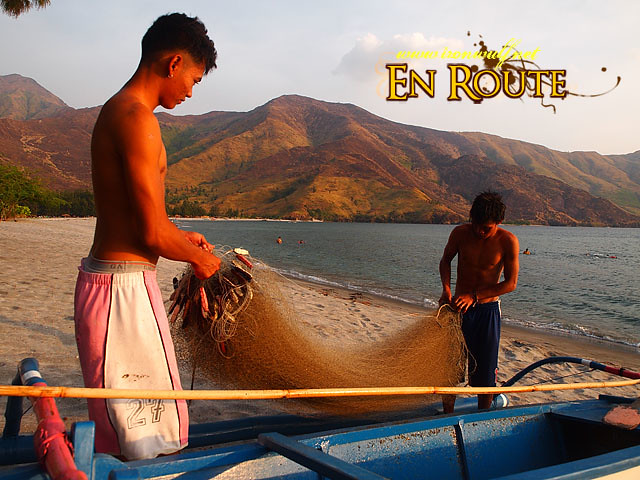
Afternoons were spent exploring the nearby areas of the cove. Sharing shooting tips and capturing the tranquility of the cove till sunset. Despite droves of boats heading to the other side of the cove, ours remain relaxed and comfortably spaced from the few groups who chose this side. We got time to take a dip and refresh by the shallow river then shoot scenes of fishermen tending nets, climbing a low cliff for a view of the cove then capturing the wondrous rugged seascape under the fiery sunset light.

I realized how I missed camping out that night. I guess it’s the sharing of chores, or cooking together under the not so bright headlamps and sharing stories over dinner and snacks makes it all worth while. I took the hammock again to sleep completely covered with my malong, arafat and titanium jacket. It was still freezing cold with the wind chill blowing from the cove to the sea that night. I was expecting the summer heat but it felt like I was in Baguio with this weather. I snugged in and got comfortable with an earth-pad behind my back. I was able to catch some sleep and be ready for another exciting day at Nagasasa.
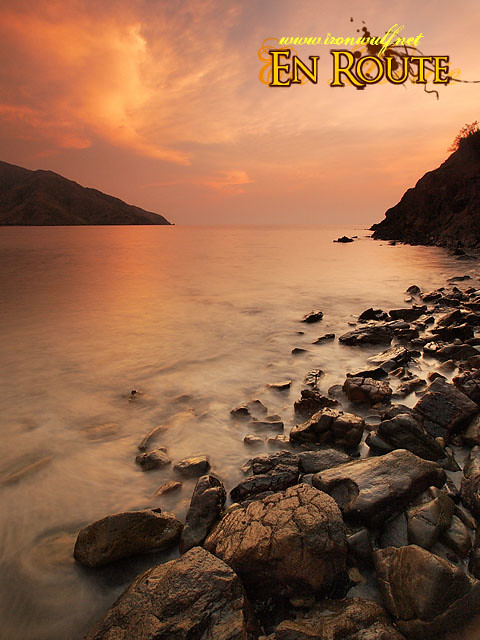

Ferdz Decena is an award-winning travel photographer, writer and blogger. His works has found print in publications such as Singapore Airlines’s Silver Kris, Philippine Airlines’ Mabuhay, Cebu Pacific’s Smile and Seair InFlight. He has also lent his expertise to various organizations like the Oceana Philippines, Lopez Group Foundation, Save the Children and World Vision, contributing quality images for their marketing materials.